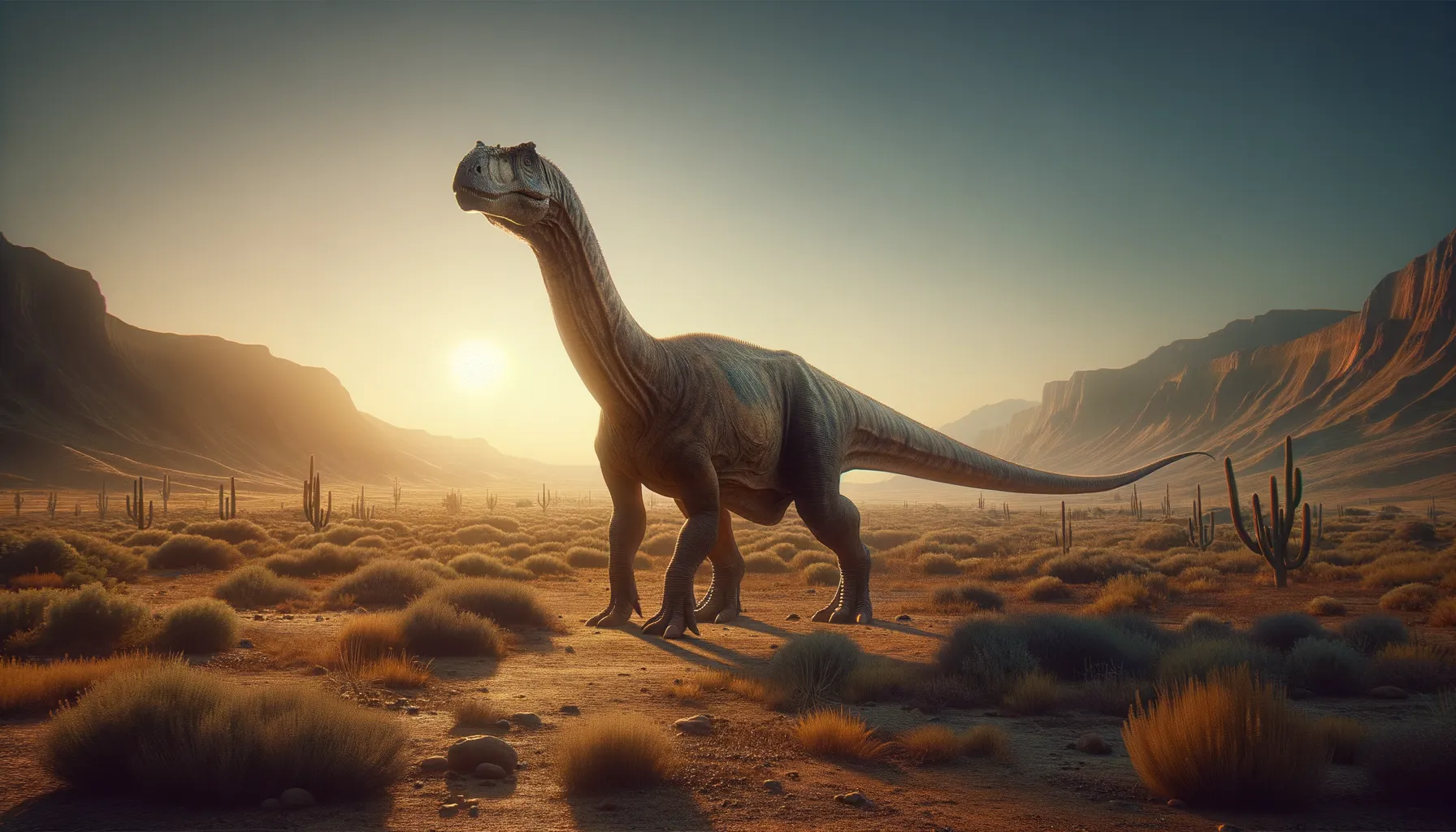
Lirainosaurus
Tiny titan of the ancient forests.
Period
Cretaceous
Length
Estimated to be 8 to 10 meters long.
Height
Around 3 to 4 meters tall.
Weight
Approximately 2 to 3 tons.
Lirainosaurus was a medium-sized sauropod dinosaur that roamed the warm lands of what is now Spain during the Late Cretaceous period. Known for its relatively small size compared to other sauropods, it had a long neck and tail, which helped it reach higher vegetation. It is a remarkable example of sauropod adaptation in European ecosystems at the time.
Diet
Lirainosaurus was a herbivore, feeding primarily on plants. It likely consumed a variety of foliage, using its long neck to reach into trees and bushes for food.
Hunting
As a herbivore, Lirainosaurus did not hunt other animals. Instead, it foraged for plant material, relying on its lengthy neck to access food in harder-to-reach places.
Environmental challenges
Lirainosaurus lived during a time of diverse plant life, which occasionally faced climate variations. This could have presented challenges in terms of finding reliable food sources. Additionally, the presence of large predators in its environment meant it needed to stay alert to threats while feeding. Seasonal shifts would also have impacted the types of vegetation available throughout the year.
Speed
Moderate, suitable for its size.
Lifespan
Estimated to be around several decades.
First discovery
Discovered in 1985 in Spain.
Fun Facts
- Lirainosaurus was a small-sized dinosaur, relatively speaking, measuring around 6 meters long which is tiny compared to other sauropods.
- It lived during the Late Cretaceous period, roughly 85 to 70 million years ago.
- Unlike many of its larger cousins, Lirainosaurus had a lighter build, making it adept at moving through the dense forests of ancient Europe.
- Its fossils have primarily been found in regions that are now part of Spain, painting a picture of prehistoric Europe as a dinosaur habitat.
- Lirainosaurus is known for having a more slender neck and tail compared to other sauropods, which might have been an adaptation to its environment.
- This dinosaur was a plant-eater and its teeth were adapted for munching on a variety of vegetation.
- Lirainosaurus is part of a group called titanosaurians, which includes some of the largest dinosaurs to ever walk the Earth.
Growth and Development
The growth of Lirainosaurus was likely similar to other sauropods, experiencing rapid growth in its early years. It would have reached near adulthood in about a decade. The development likely involved changes in bone structure to support its large and heavy body as it aged. Fossil evidence suggests it adapted well to its environment, reaching full maturation at a slower pace later in life.
Habitat
Lirainosaurus inhabited forested regions with diverse vegetation, which provided ample food sources. These areas were warm and conducive to supporting a variety of plant life. Its environment included coastal plains and riverbanks that offered both food and water, essential for sustaining its sizable population.
Interaction with other species
As a herbivore, Lirainosaurus coexisted with many other species, including predators and smaller herbivores. It played an essential role in its ecosystem, potentially helping to control plant overgrowth. Predators likely viewed it as a potential meal, but its size provided some defense. The presence of other sauropods might have led to competition for food resources.
Natural lifespan
Lirainosaurus likely had a natural lifespan of several decades in the wild.
Reproduction
Lirainosaurus likely reproduced by laying eggs in nests. These nests would have been constructed in soft, warm ground to ensure appropriate incubation conditions. Parenting behaviors are not well-documented, but like many dinosaurs, hatchlings may have needed to fend for themselves soon after birth.
Social behaviour
This dinosaur possibly exhibited herd behavior typical of sauropods, offering protection against predators. It may have lived in groups that migrated together in search of food. Such social structures helped maintain population safety and allowed for shared knowledge of fertile feeding grounds.
Fossil locations
Fossils of Lirainosaurus have been primarily found in the region of what is now Spain. These fossil discoveries have been crucial in understanding its role in the Cretaceous ecosystems of Europe. The site's conditions preserved a significant amount of detail, providing insights into its anatomy and lifestyle.
